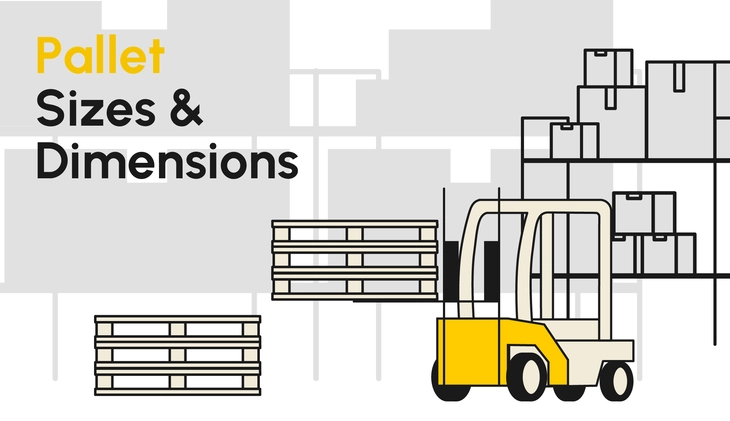Introduction
The world of shipping and logistics has experienced waves of tech innovation over the past 50 years. The advancements in hardware and software have revolutionized many processes in the transportation and logistics sector.
The central figure in this evolution is the transport management system (TMS), combining all the software tools and features a transportation manager needs. In this article, we're exploring the evolution and history of TMS software, along with notable events and related developments in the transportation and logistics industry.
| 1970s |
|
| 1980s |
|
| 1990s |
|
| 2000s |
|
| 2010s |
|
| 2020s |
|
1970s: The Barcode
The 12-digit linear UPC barcode, the brainchild of Bernard Silver and Norman Joseph Woodland, changed the world of product management. By 1974, the first retail item—a pack of gum—was sold using this barcode. The same UPC standard is still in use today, and barcodes are used everywhere, including shipping labels.
The first barcode patented by Silver and Woodland in 1952 looked like a bullseye:
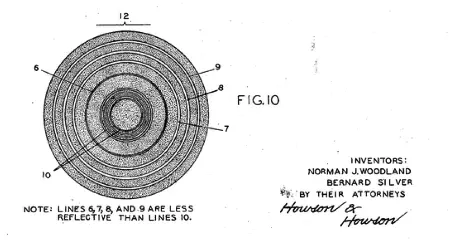
1980s: Birth of EDIFACT and ERP Systems
EDIFACT messaging protocol
By collaborating with the ISO, CEFACT developed the UN/EDIFACT messaging protocol in 1986, swiftly adopted as the global standard a year later. EDIFACT is short for "Electronic Data Interchange for Administration, Commerce and Transport". EDIFACT is a set of rules that defines clear structures for business messages, allowing computer systems to communicate with each other via EDI (Electronic Data Interchange). An EDIFACT message is a structured text file that was most commonly transmitted via FTP (File Transfer Protocol).
There are hundreds of message definitions inside EDIFACT, and different versions for each. In logistics, IFTMIN (International Forwarding and Transport Message - Instructions) became the most common EDIFACT message, transmitting shipment details from shipper to carrier.
Sample IFTMIN (Transport Instruction) message - 1 EUR pallet to John Doe:
As you can see, it was mainly designed to be written and read by computers, not humans.
UNA:+.? ' UNB+UNOA:3+4012345000016:14+4023083000008:14+240823:1550+12345' UNH+1+IFTMIN:D:96A:UN' BGM+610::9+1234567+9' TSR+++3' FTX+DEL+++Delivery to John Doe' FTX+AVI+++Mr Adam Doe / 0123-12345678 (Avis recipient)' FTX+SUR+++FRAGILE' FTX+SPH++T' TOD+6++EXW' RFF+DQ:123456' RFF+ON:654321' RFF+ITP:PROVIDER-NAME' NAD+CN+++John Doe+Sample Street 10+Düsseldorf++12345+DE' NAD+CZ+4012345000016' NAD+FW+4022128000003' GID+1+36:CT' FTX+AAA+++Test Goods' MEA+WT+AAE+KGM:93' PCI+33E' GIN+BJ+00340258761202887418' SGP+1' GID+2+2:201' FTX+AAA+++Test Goods' SGP+1' EQD+201+1' EQN+1' UNT+19+1' UNH+3+IFTMIN:D:96A:UN' BGM+610::9+1234567+9' DTM+137:2408200825:203' TSR+++3' FTX+SPH++T' TOD+6++DDP' NAD+CN+++Sam Doe+Sample Street 12+Demotown++99999+DE' NAD+CZ+4012345000016' NAD+FW+4022128000003' GID+1+1:EP:::Euro pallet' FTX+AAA+++Test Goods' MEA+WT+AAE+KGM:150' PCI+33E' GIN+BJ+00340258761202887425' UNT+13+3' UNZ+1+12345'
ERP systems
Around the same time, ERP systems started gaining traction. Enterprise Resource Planning (ERP) refers to software that helps organizations manage their daily operations, including areas like accounting and finance, sales, marketing, procurement, project management, risk management and compliance, human resources, customer relationships, logistics and manufacturing, supply chain management, and more.
ERP systems started as Material requirements planning (MRP) systems in the 1960s, when the J.I. Case tractor company and IBM collaborated to create the first MRP system.
In the 1980s, MRP evolved to MRP II, which combined financials and accounting with the traditional features of MRP - inventory and materials management. It's likely that the first modern ERP system was one of the more advanced MRP II systems, but they were still private developments and based on the mainframe computer.
Personal computer sales exploded in the early 1980s. The term ERP as we know it today was officially introduced in 1990 by Gartner. It had a graphical user interface and included all areas of the manufacturing business that were not included in MRP II, like human resources, scheduling, and sales. By 1990, ERP systems had begun to experience massive growth. The first modern ERPs on Windows included names like Visual Manufacturing, Vista, Vantage (Epicor) and KAOS.
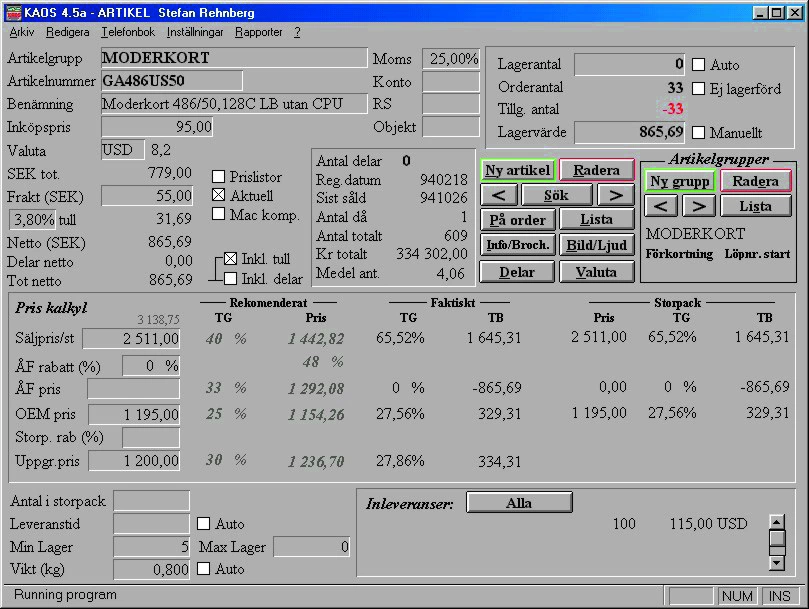
All the ERP systems in the 1990s used a legacy on-premise model until 1996, when Netsuite created an ERP system that worked across the business functions of a company but was delivered over the internet.
1990s: Transportation Management Systems and The Dotcom Wave
The shipping industry's adoption of the Electronic Data Interchange (EDI) paved the way for more structured and efficient data exchange between shippers and carriers, lowering costs manyfold, improving speed and reducing errors.
As ERP modules
The widespread development and use of business software for transportation processes was facilitated by the spread of ERP systems in the 1990s. Leading ERP systems like SAP introduced specialized modules for transportation management.
- In 1987, SAP introduced its Transportation Management module for the SAP ERP, allowing businesses to optimize logistics and supply chain functions. Read more on the evolution of SAP Transportation Management.
- Global Logistics Technologies (G-Log), founded in 1999, developed their GC3 platform, a comprehensive transport management and freight optimization system. Oracle Corporation acquired G-Log in 2005, rebranding GC3 as Oracle Transportation Management (OTM).
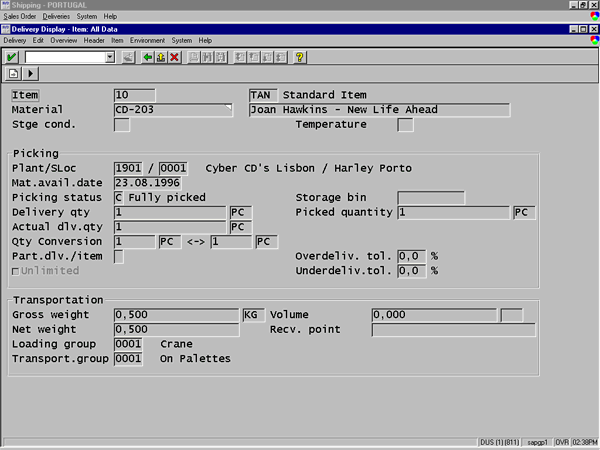
These modules primarily focused on process management and visibility for the shippers, providing a 10,000-foot-view view of their logistics operations, but without system-to-system integrations.
As Standalone Services
Following the success of the ERP transportation management (TM) modules, standalone TMS solutions emerged, with a greater focus on building their own carrier networks and offering specialized and modular functionalities:
- Descartes, established in 1981, was one of the earliest player in the TMS landscape, with its popularity gaining traction especially in the mid-2000s. They started offering a suite of transportation management software solutions which were built with modularity in their core, meaning customers could mix and match different modules depending on their needs. Descartes is also known for their large carrier network called the Global Logistics Network™.
- Transporeon, founded in 2000 in Germany, aimed to bridge the gap observed in the existing ERP-TM modules. They connected industrial and retail businesses with their logistics providers, creating a seamless flow of information and transactions. By 2023, Transporeon's significant influence in Europe led to its acquisition by Trimble.
Freight Marketplaces
Marketplaces like TimoCom, established in 1997 in Germany, created platforms where shippers and carriers could connect to buy, sell and publicly bid on freight loads and available cargo space. This reduced cost-intensive empty runs and introduced a way for shippers to receive offers for irregular loads and shipments.
2000s: The Rise of Web APIs and the Cloud
One-way to two-way data Exchange: EDIFACT to SOAP and REST APIs
The 2000s saw the emergence of SOAP, which improved upon the limitations of EDIFACT messages, offering two-way, instant communication and better readability. Subsequently, Roy Fielding's 2000 dissertation promoted the rise of REST-based APIs, which now dominate in the software industry.
Cloud Computing
The shift from traditional on-premises systems to cloud-based TMS solutions in the 2000s revolutionized the logistics industry. Cloud computing, popularized by giants like Amazon Web Services (2006) and Google Cloud Platform, offered companies unprecedented flexibility and scalability. Descartes, in 2001, transitioned its business model from selling full-featured enterprise software licenses to offering on-demand software on a subscription basis, becoming one of the first SaaS providers in the logistics sector. Newer TMS solutions were built as cloud-based from the start.
The ability to access data from anywhere gave birth to real-time collaboration among global teams. Plus, the cloud's rapid implementation times and automatic updates ensured firms kept pace with the latest technological features, without the cumbersome processes of the past.
Fleet Management Software and GPS Tracking
As the logistics landscape became more intricate, the need for real-time tracking and efficient fleet management became apparent. The improvements in technology in the 1990s and 2000s saw the rise of fleet management systems integrating GPS tracking (telematics).
The first GPS satellite was launched in 1978, and President Ronald Reagan opened the GPS system to the public in 1983, but with a decreased accuracy of around 100 meters. In 2000, US President Bill Clinton signed a bill to grant the full GPS accuracy to the public.
This gave businesses the ability to monitor vehicle locations, optimize routes, and obtain detailed vehicle diagnostics in real-time. The first vehicle tracking systems launched in the late 1990s, and among the first solutions were Frotcom 1.0 (1997) and Fleet Complete (1998), which still operate today, having evolved considerably and offering advanced fleet management software solutions.
Fleet management software is used by both carriers/freight forwarders and shippers operating their own fleet to track, monitor and plan their deliveries and vehicles. Shippers using their own fleet can integrate their fleet management software into their TMS, so it can be used as a normal transport service provider, next to their third party carriers. Check out an example of how this setup works based on the example of Fleet Complete FMS and Cargoson TMS.
Dock Scheduling Software
To further streamline logistics operations, the 2000s saw the introduction of specialized dock scheduling software. These platforms optimized loading dock operations, minimizing wait times and ensuring that warehouses operated at peak efficiency. Carriers could reserve loading times in the customer’s warehouse. By systematizing the arrival and departure of shipments, these tools helped reduce logistical bottlenecks like queues of trucks and idle periods. One of the first dock scheduling software solutions on the market was C3 Reservations, developed by C3 Solutions, established in 2000.
Nowadays, most shippers would ideally like to centralize all their transport management needs in one software. By now, most TMS providers have built their dock scheduling software offerings which could be seamlessly integrated with your TMS solution (example dock scheduling software - Loading Calendar).
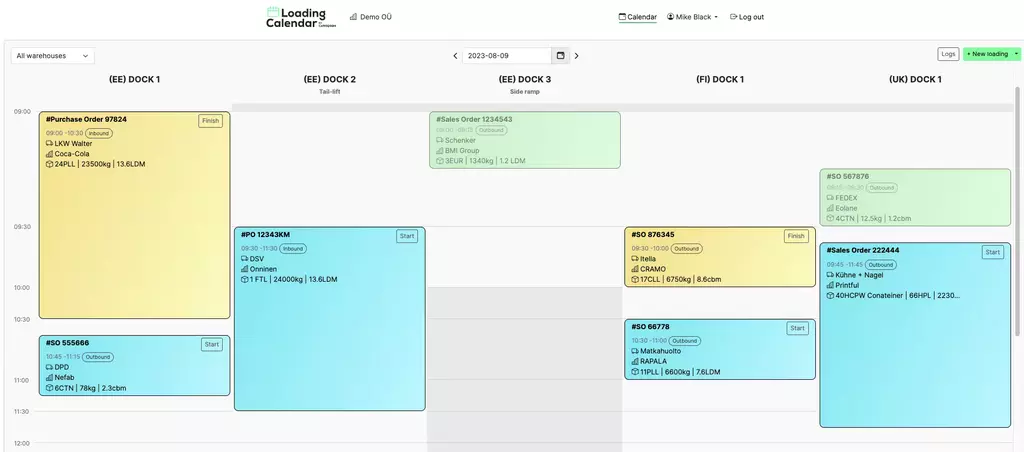
2010s: Digital Transformation
eCommerce and Multi-Carrier Shipping Software
By the 2010s, every chain retailer had an online presence. With eCommerce platforms like Shopify (launched in 2006), Magento (2007), and WooCommerce (2011) making it quick, easy and affordable for businesses of any size to launch an online store, eCommerce sales as a percentage of total retail sales in the US grew from 0.9% in 2000 to 14% in 2020. Given that online stores often sell worldwide and varying quantities, merchants often used different carriers and needed a way to manage their shipping efficiently. This caused a rapid rise of multi-carrier shipping plugins for eCommerce platforms, for example:
- ShipStation (2011)
- ShipEngine (2011)
- Shippo (2013)
- ShipBob (2014)
These plugins were used to automate some of what a full-featured TMS would, like carrier selection, label printing and shipping notifications, but added features specific to the needs of eCommerce businesses like automated returns and branded tracking.
Cloud-Based Transportation Management Systems
Building upon the cloud groundwork from the 2000s, the 2010s witnessed a surge in the adoption of cloud-based TMS solutions. This shift made the capabilities of large, full-featured TMS software systems affordable for all businesses, not just enterprise clients. The Estonia-based Cargoson, established in 2018, epitomized this shift, offering an affordable, comprehensive, and cloud-based TMS accessible for enterprises of all sizes.
Being cloud-native, these platforms ensure accessibility from any location, instant updates, rapid implementation times, and dramatically lower software costs. Combining the features of a traditional transportation management system and modern multi-carrier shipping software, systems like Cargoson enabled modern shippers to integrate with all of their carriers—big or small—in a uniform process, upon customer request and without added fees.
Read more: https://www.cargoson.com/en/blog/transportation-management-system-for-small-business
Watch a demo of a modern multi-carrier transportation management system (Example with Cargoson):
Virtual Freight Forwarders
Blending traditional freight forwarding services and digital capabilities, virtual freight forwarders emerged as disruptors. Flexport, founded in 2013 in the USA, is a notable example, leveraging technology to automate freight forwarding and customs brokerage.
2020s: Green Logistics and Sustainability
The sustainability movement has been gaining momentum since the early 2000s. Tools like EcoTransIT (Ecological Transport Information Tool), introduced as early as 2003, were created to give businesses the ability to calculate energy consumption and emission data for freight transports.
The Paris Agreement
Since the 2015 Paris Agreement there has been an increased focus on standards for financial risk from GHG emissions. Participation in greenhouse gas accounting and reporting has grown significantly over time. In 2020, 81% of S&P 500 companies reported Scope 1 and Scope 2 emissions.
From Carbon Accounting to Real-Time Transport Emission Calculation
However, the focus has been shifting from retrospective carbon accounting to actual, proactive behavior change in the 2020s. This can be illustrated with platforms like Cargoson pioneering the inclusion of real-time, transport emission calculation directly in the dashboard of the logistics manager making transport decisions on a daily basis. This proactive approach allowed businesses to make environmentally friendly transport decisions, marking a departure from retrospective carbon accounting.
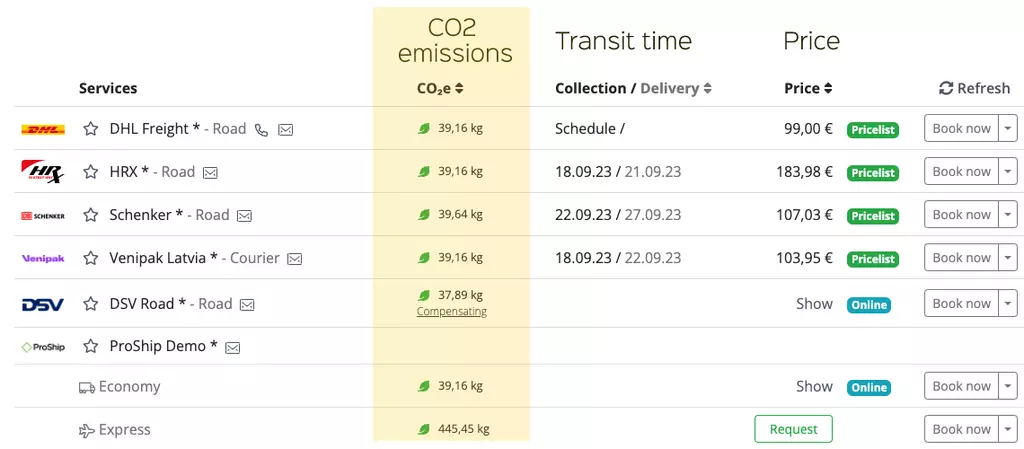
If you'd like to test and play around with different shipment data, you can use the publicly available transport CO2 emission calculator.
Future trends
As the industry looks forward, the potential integration of AI and blockchain in TMS presents promising possibilities. These technologies, currently in their testing phases, promise to bring about improved transparency, efficiency, and security to the transportation management landscape.
Conclusion
From barcodes in the 70s to the experiments with AI and blockchain in the 2020s, the transportation management software's journey has been marked by innovation. With every decade, TMS software solutions have constantly evolved, and the future, undoubtedly, hides even more possibilities.
Author's Note: This article is a living document, intended to evolve over time. Should you find any omissions, inaccuracies, or simply have suggestions, queries, or additional insights, feel free to drop me an email at [email protected].


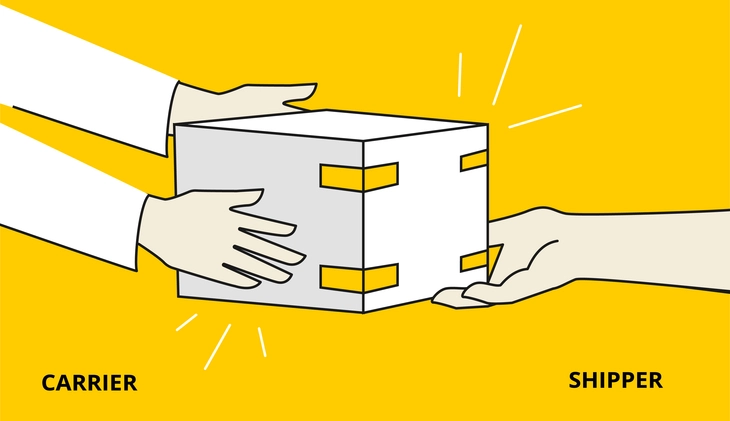
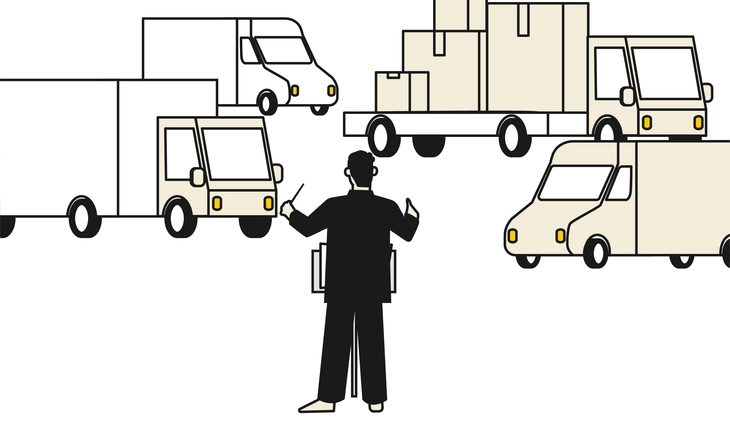

![Selecting a Freight Carrier: 10 Tips [+ free scorecard] Selecting a Freight Carrier: 10 Tips [+ free scorecard]](https://www.cargoson.com/rails/active_storage/representations/redirect/eyJfcmFpbHMiOnsibWVzc2FnZSI6IkJBaHBBd2o5RVE9PSIsImV4cCI6bnVsbCwicHVyIjoiYmxvYl9pZCJ9fQ==--06447f54e22ae59c29bcf59b8b5f830afd66da06/eyJfcmFpbHMiOnsibWVzc2FnZSI6IkJBaDdDRG9MWm05eWJXRjBPZ2wzWldKd09oSnlaWE5wZW1WZmRHOWZabWwwV3dkcEF0b0NhUUwwQVRvTVkyOXVkbVZ5ZERzRyIsImV4cCI6bnVsbCwicHVyIjoidmFyaWF0aW9uIn19--2c7d6c6b28c4d68db8f7c1f368d1bcdc6ab5275a/selecting-a-freight-carrier-10-tips-plus-free-scoresheet-template-download-cargoson.webp?locale=en)
